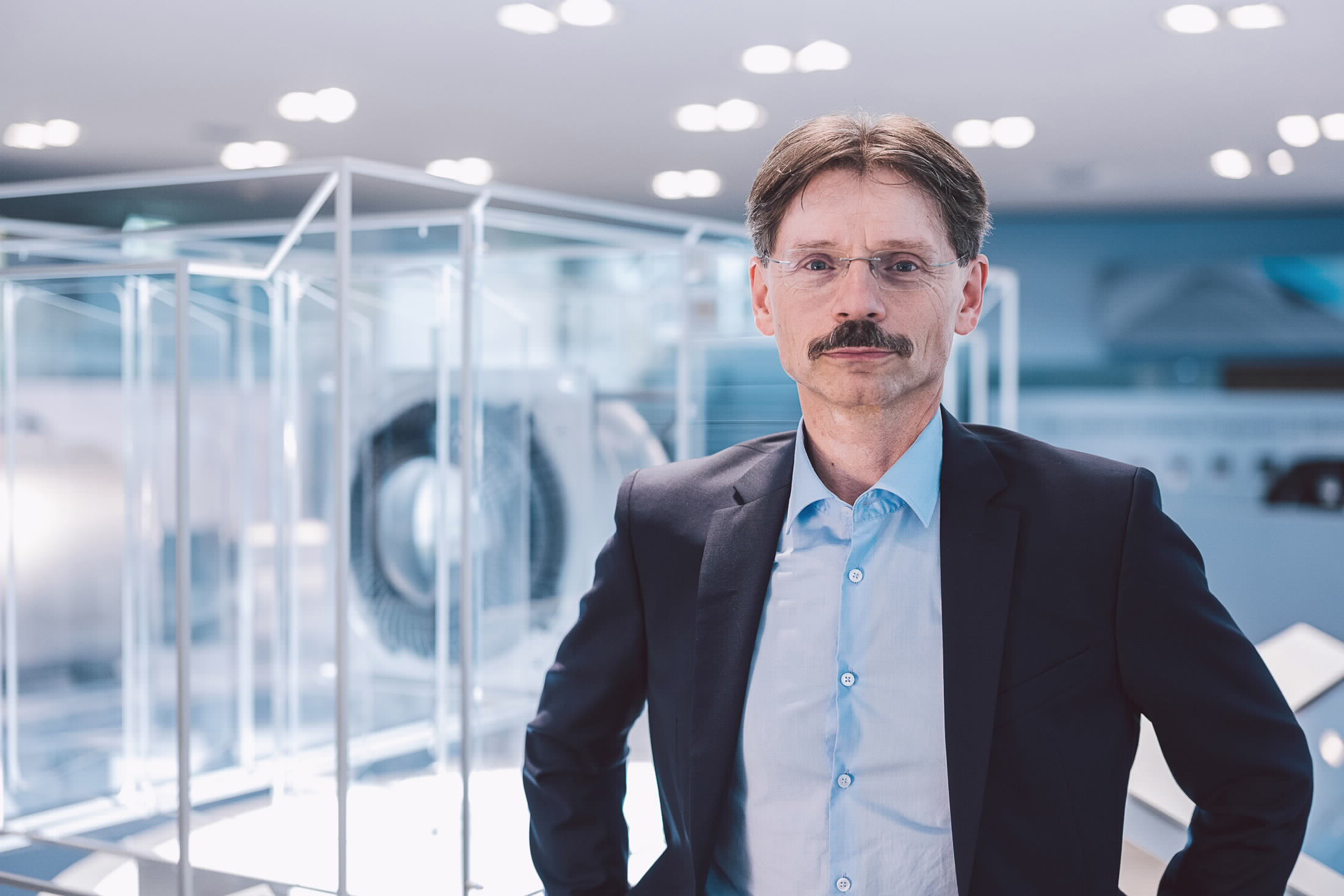
Between system solution and individuality
Together with our customers, we have addressed various questions concerning the characteristics of an effective performance management system and the needs for a successful implementation in organizations. Our answers profit from the perspectives of an agile tech company, a start-up in the midmarket phase and an international corporation.


Hans-Carl von Hülsen
Senior Manager | Compensation & Performance Management
In the following, we have summarized customer interviews on the topics of performance culture, integrated approach, implementation, and mindset. In addition to the background of the practical examples, this article ends with a brief classification by Kienbaum.

Figure 1 – Kienbaum Performance Management Approach
Is everything a question of culture? Why any performance management system can be successful if only it fits the company
The classic performance management system, the “one size fits all” off-the-shelf solution including target agreement and performance appraisal, is known to have its limits. Solutions that align performance management more closely with the corporate culture, the performance profile, and the values of the organization as well as the development of the employees are seen as more promising. The Kienbaum Culture Framework shows that a constructive corporate culture sets the right cornerstones for successful implementation. The companies of our interviewees build on the prerequisites of a constructive culture, but the solutions they choose are very specific and vary in their design.
For example, Enreach as an innovative tech company, organized partly holocratically, places a strong focus on personal growth and contribution to the company’s success rather than individual performance. Even promotions and compensation increases are based on the value employees add to their team and the organization. Employees are managed through OKRs, with requirements always made transparent. Accordingly, employees should “get to a point where they feel the highest satisfaction and at the same time make the greatest possible contribution to the organizational goals,” explains Anita Klaver in an interview.
At ebm-papst neo, the focus is on participation. As a fairly new, rapidly growing start-up, the company places great value on the ongoing involvement of employees and constant feedback far beyond the annual review. “If the employee is surprised by the ‘result’ in the annual review, then we did something wrong during the year,” Sauer and Kühnle say.
For Intersnack, on the other hand, there is the requirement to move the diverse international activities of the various national companies and brands in a common direction without losing sight of regional requirements and needs. The common performance management platform must therefore be based on a certain standard and must also allow flexible degrees of freedom.
Accordingly, the companies surveyed have developed suitable performance management systems that not only reflect the respective corporate culture, but also promote and develop it further – whether in an agile context, in the start-up culture within the framework of a medium-sized company, or in a corporate environment in which regional requirements need to be coordinated with international ones.
When the pieces of the puzzle fit together: Why the performance management system must be thought of as integrated in order to be efficient
Companies and their performance management systems are in a state of transformation. Components are added or changed, which can quickly lead to contradictions within the organization. For example, self-organized teams and controls via OKRs do sound promising at first, but often fail due to a classic understanding of performance measurement and assessment if this is done exclusively by the direct supervisor. To avoid this, it is important to think of performance measurement, appraisal, and consequence more comprehensively – like a jigsaw puzzle in which one piece fits together with the others to create an overall picture. Our interviewees each found their own challenges with very specific approaches and levels of integration.
After transitioning to a holocratic, role-based organization, Enreach faced the challenge of making changes to its existing compensation system. Self-organized teams demanded a high level of transparency in the compensation system and a greater focus on personal development. “The system as a whole had to be rethought and a coherent set of tools created,” says Anita Klaver.
Ebm-papst neo is currently facing the challenge of designing its own performance management system that also needs to be in line with the requirements of the parent company – without becoming entangled in contradictions. “As a start-up, being part of a larger company means that, on the one hand, you can benefit from the framework and experience of the parent company, and on the other hand you have to consistently find your own way within it,” Sauer and Kühnle explain in an interview with us.
For Intersnack, the development of a strategic competence model in conjunction with competence levels as a fundamental platform was important for their international network. The model significantly supports a common understanding concerning employee and leadership behavior, also in an international context. This makes it an important building block on the way to a uniform assessment system.
Our interviews make it clear that performance management systems are always undergoing change across the various corporate contexts. They must be aligned with current and individual challenges and take employees along with them and support them in change processes and organizational development processes.
Ready for Change? What makes the implementation of integrated performance management successful – regardless of its design
Once a holistic approach that fits the corporate culture and its tools have been identified, companies face the next hurdle: implementation. Key success factors for our customers include employee participation and training as well as sophisticated change management.
At Enreach, employees and managers are introduced to the new system through intensive training and support, with ease and in constant dialogue. However, the change management process takes time: “Acquiring new practices and ‘unlearning’ practices that have been ‘rehearsed’ for many years takes time. Expectations need to be acknowledged and, if necessary, corrected.” Therefore, not everything has to work perfectly from the start. Instead, the space should be created to learn in the process and make incremental adjustments.
In line with its focus on participation, Ebm-papst neo places great emphasis on involving employees in the implementation. Thanks to bottom-up design, empowerment of employees and the delegation of responsibility, the new system can be designed with joy. A high level of participation by all employees also ensures greater acceptance from the organization for the changes to be implemented.
At Intersnack, the joint development of the performance management platform in an international HR working group was essential. The modular design of the system for agreeing on targets, competencies and a development-oriented performance dialogue are decisive for regional acceptance in an international context. In this context, it was important that HR coordinated and developed target profiles in collaboration with executives so that regional differences could be mapped flexibly.
The successful implementation of a holistic performance management system therefore requires above all the involvement and training of employees. In all three practical examples, acceptance is supported by a positive error culture and the willingness to continuously develop the system.
A system is only as good as the people who live it: Which people and mindsets facilitate implementation in the organization?
A new performance management system also requires new ways of thinking and behaving and is therefore always associated with change. When a performance management system changes, the requirements for those involved and the framework conditions also change. Clarity concerning the requirements for the roles and the handling of role fulfillment are key success factors for the implementation.
Ebm-papst neo has many highly motivated employees who are actively shaping the company. The close contact and equal treatment of everyone, for example with regard to bonus payments that are only linked to the achievement of ambitious corporate goals, creates a shared mindset and a strong sense of “we”. “At ebm-papst neo, everyone (even as a cleaner, if there were one) has a bonus that is linked to collective goals.” With the current conversion of corporate management to OKRs, this shared mindset is being fueled once again.
Enreach places great emphasis on the right frameworks, leadership styles and dynamics. In their case, for example, the high degree of innovation and the agile orientation of the organization have laid the foundation and necessity for also being able to introduce innovative HR practices. In particular, Enreach relies on peer-to-peer feedbacks instead of one-dimensional assessments by managers. To be exact, the mindset of management is important here: “Management has to believe and be open to new things. Change has to start at the top.”
At Intersnack, the performance management process uses the same international standard to obtain both the views of supervisors and the expectations of employees. Regionally differentiated competence profiles and behavioral anchors provide employees and managers with an objective basis for a development-oriented feedback process. The new performance management system thus helps to meet changing employee needs in terms of participation and development opportunities.
We can therefore see that the mindset of the managers, a collective success perspective as well as a feedback-oriented management culture contribute significantly to the sustainable success of an implemented performance management system.
Conclusion
The companies interviewed all chose a very individual positioning of their performance management against the background of their principles on performance, the business model, and the corporate culture. From Kienbaum’s point of view, the fundamental positioning in conflict between classic, hybrid and agile performance management is central to the successful design of performance management. Thus, the OKR approach with the collectivization of bonus payments is promising for ebm-papst neo as is the target and competence control system with regional freedoms for Intersnack. As the example in the concluding graphic shows, positioning is essential and decisive for later success when choosing and designing the instruments and the process for performance management. This design step in alignment with the cultural fit is essential, as the design of the performance management system has an impact on employee satisfaction and motivation on the one hand, and on the company’s earnings and growth on the other.
Our interviewees:

Pia Schlei, HR Director Group at Intersnack Group GmbH & Co. KG
.
We would like to thank our four interview partners for their input. Pia Schlei is Head of Human Resources at Intersnack, the international medium-sized group and market leader for salty snacks. The Group unites a large number of brands under one roof. A particular challenge for performance management is to support creativity and the will to drive the company forward internationally while maintaining a regional identity.

 Thomas Sauer, CEO and Oliver Kühnle, Group Director IT at ebm-papst neo GmbH & Co. KG
Thomas Sauer, CEO and Oliver Kühnle, Group Director IT at ebm-papst neo GmbH & Co. KG
Our other interview partners are the “Chief Everything Officers” Thomas Sauer and Oliver Kühnle from ebm-papst neo. As an outsourced start-up (“think tank”), the company develops digitization strategies and digital business models under the umbrella of its medium-sized parent ebm-papst, the world’s leading manufacturer of fans and motors. Speed, innovation and agility are firmly anchored in the culture of ebm-papst neo in order to be able to achieve the challenging growth targets of the innovative business model.
We would also like to thank Anita Klaver, Head of HR at Enreach. The international communications provider with more than 900 employees in eleven European countries focuses strongly on innovation, self-organization and an entrepreneurial mindset among its employees. Large parts of the organization are organized holocratically, which is also reflected in the company’s performance management.
Any questions? Don’t hesitate to contact us!
Hans-Carl von Hülsen | Mail: Hans-Carl.vonHuelsen@kienbaum.de | Phone.: +49 211 96 59-226
Nils Prüfer | Mail: Nils.Pruefer@kienbaum.de | Phone.: +49 211 96 59-221
